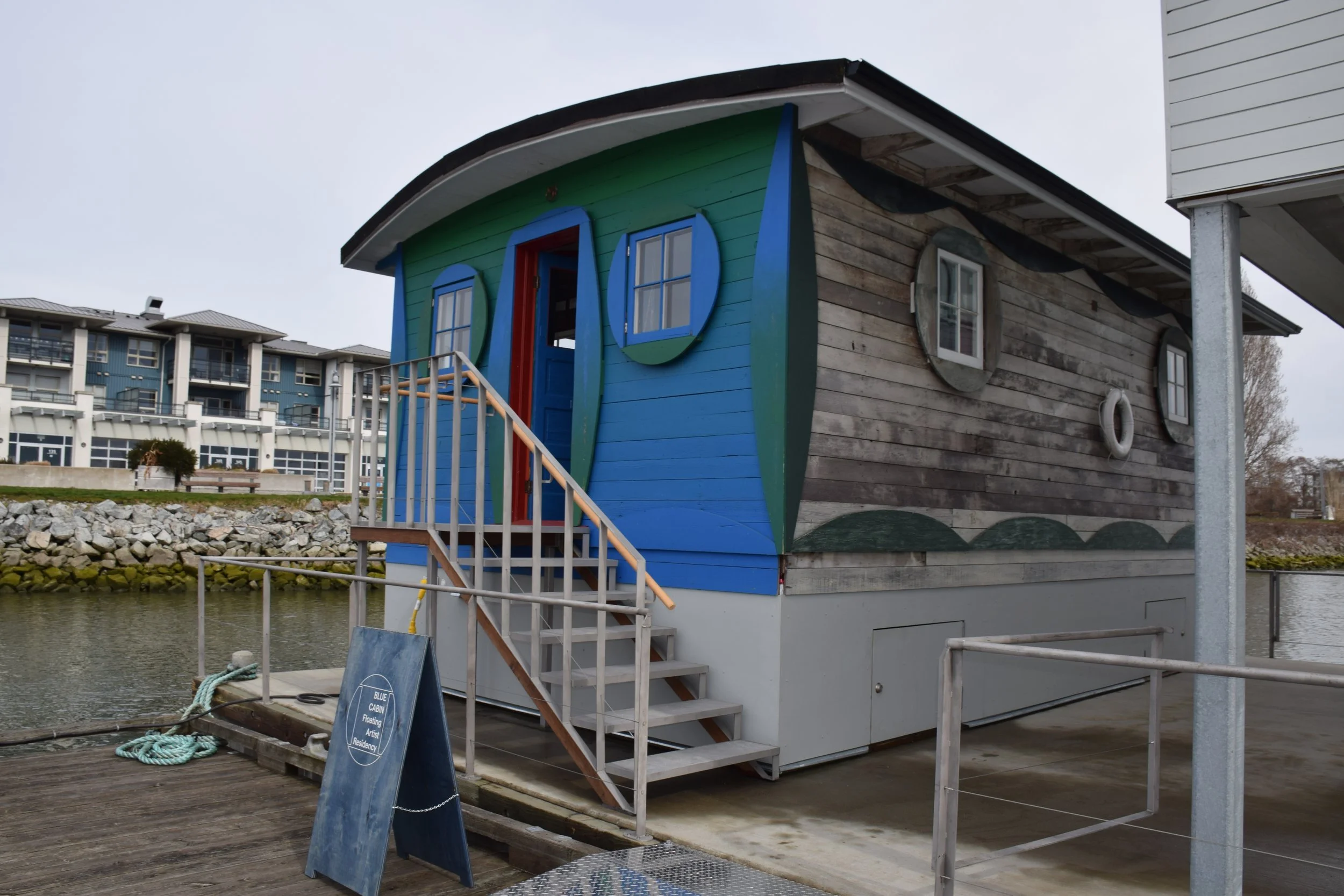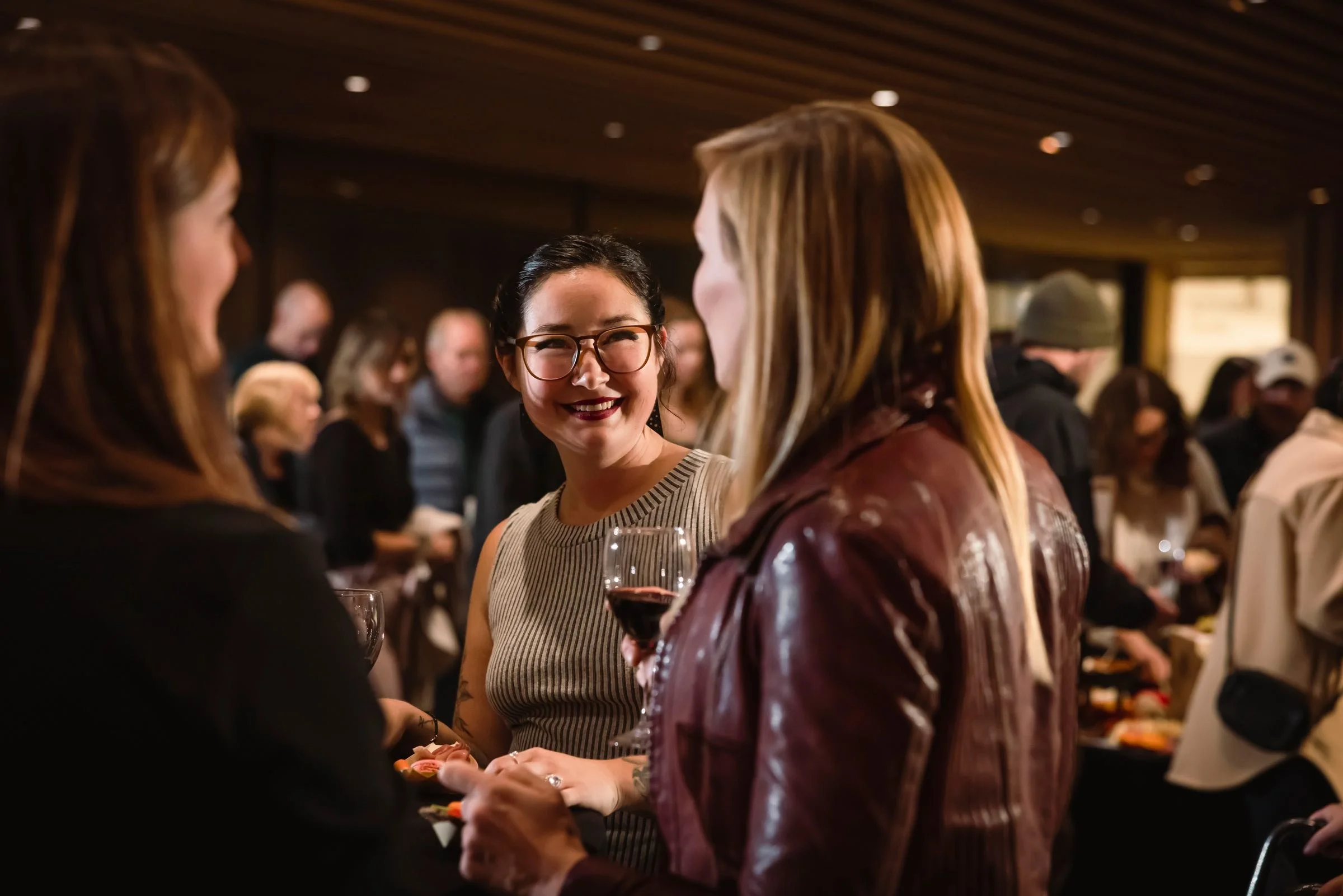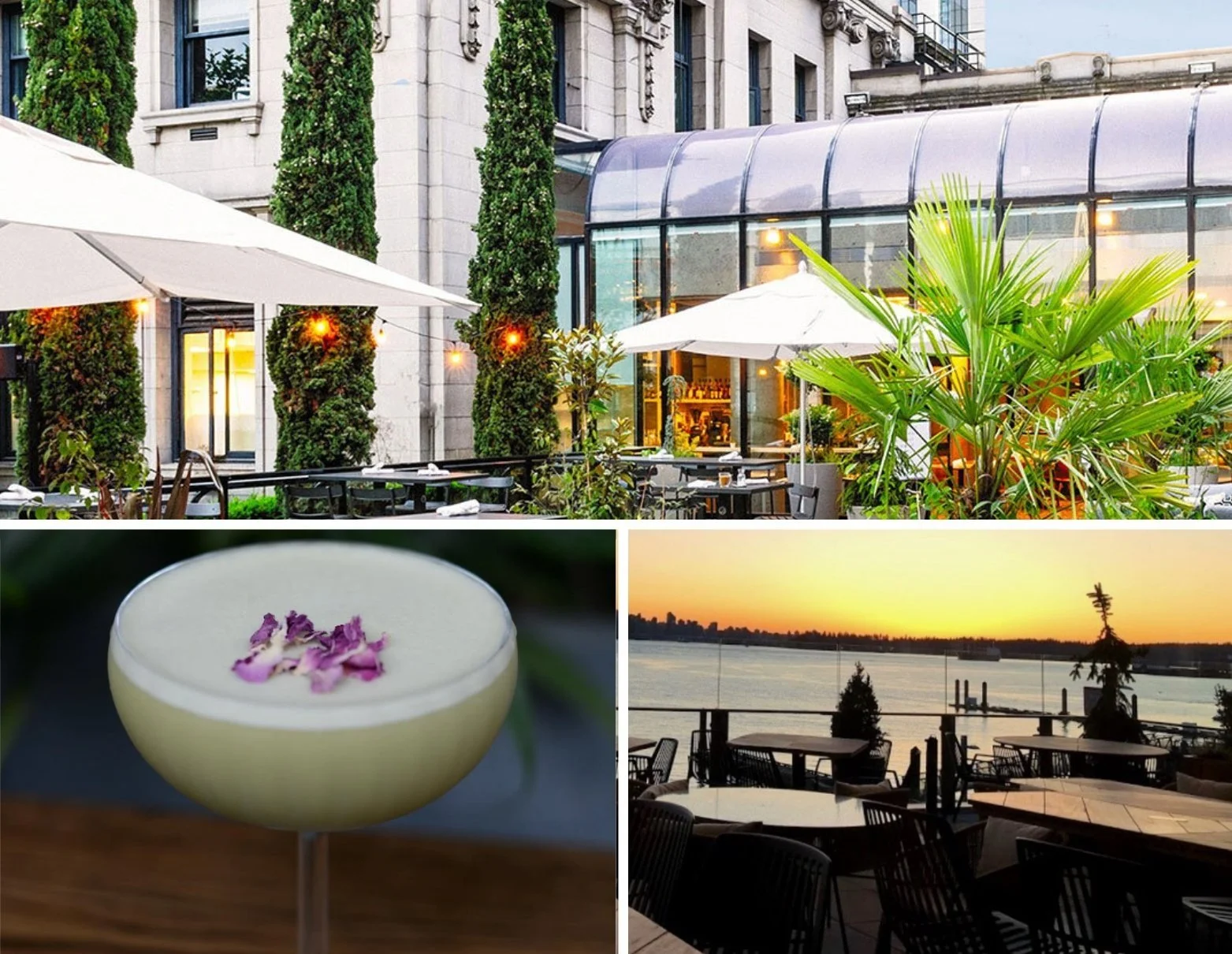The storied Blue Cabin artists' residency settles into its new home in Steveston
Throughout April and May, Musqueam artist Debra Sparrow will be holding weaving workshops onsite
The Blue Cabin. Photo by Henri Robideau
THE BLUE CABIN, a quaint artist residency with a vibrant history, now overlooks the teal waters of Steveston Harbour.
At 7 o’clock on the calm morning of Monday, January 24, a tugboat towed the Blue Cabin along the Fraser River from its previous location in False Creek’s Plaza of Nations to its new resting place in Steveston Village’s Imperial Landing, a smooth trip that took five and a half hours. The floating artist residency is slated to remain in Steveston for the next two years before it changes locations once again.
According to managing director Anthony Meza-Wilson, the Blue Cabin’s history of being located on Vancouver’s foreshores—which are areas between high and low tides—has inspired many of its plans, including its current placement in Steveston.
“That’s been a guiding principle for the project since the beginning, is this idea of being in a sort of liminal or in-between zone,” says Meza-Wilson, “so the idea of place is kind of an ever-shifting aspect of the cabin. It’s also something that we really hope informs the selection of the artists and informs everything that we do, and the responsibility of artists in the space thinking around Indigenous territory, and waterways, and jurisdiction as well.”
The Blue Cabin was originally built in 1927 and moved to pillars on the foreshore of Cates Park in 1932, where it rested in Tsleil-Waututh (səlilwətaɬ) Nation territory next to land owned by McKenzie Barge and Marine Ways Ltd. From 1966 to 2015 it was occupied by Al Neil, with his wife Carole Itter joining him from the late 1970s onwards. Neil and Itter were both iconic artists and writers, with Neil also having a passion for music, and Itter for filmmaking. This was the Blue Cabin’s beginning as a sanctuary for artists.
In 2015, Neil and Itter were evicted when the development company Polygon Homes bought the land next to the Blue Cabin and agreed to clean the contaminated foreshores that stretched up to the cabin’s resting place. It was then that a group of artists—among them Glenn Alteen of grunt gallery, a Vancouver Indigenous-focused art centre—collaborated with the District of North Vancouver to save the Blue Cabin and turn it into an artist residency. It was restored and reconfigured as a floating space by early 2018, and in 2019, it was set into the foreshore waters of False Creek, ready for occupation once more.
Photo by Sunshine Frère
Meza-Wilson says that the Blue Cabin’s waterfront placement allows its artists in residence to develop inspiration from the tidal patterns, shifting weather, and environment they’re working in.
“Being inside the cabin itself is a pretty magical experience,” Meza-Wilson says. “It’s a very unique space. You walk in and you just kind of feel, you know, the room has its own kind of vibrancy.”
Throughout April and May, Musqueam weaver Debra Sparrow will be the cabin’s artist-in-residence as the third part of a program called Skeins: Weaving on the Foreshore. Sparrow’s residency has been delayed nearly two years due to the pandemic, shares Meza-Wilson, and will feature workshops for the public that teach Coast Salish spinning and weaving, natural dyeing, and basketry.
Moving into the summer months of June and July, the Blue Cabin will be engaging in collaborative work with the City of Richmond for events like Doors Open Richmond, an annual program that offers insight into the city’s heritage; the Richmond Maritime Festival; and the Steveston Salmon Festival. The cabin also has plans to honour National Indigenous Peoples Day on June 21. Come August, says Meza-Wilson, another local artist, Keeley O’Brien, will begin a two-month residency in the cabin.
Meza-Wilson says he is hopeful that in 2023, the Blue Cabin will welcome four international artists into its space for residency work—a plan that has been continuously delayed due to the pandemic.
As for the cabin’s next location, Meza-Wilson would like to see it return to the foreshores of Cates Park through connection and collaboration with the Tsleil-Waututh Nation and the North Shore. The site would allow for work that showcases the cabin’s origins and the area it came from.
“There’s so much rich history, you know: the history of the cabin, and its connection to maritime histories, labour histories, to the natural history, Indigenous history,” says Meza-Wilson. “With all the different kinds of aspects that you see intersecting, it’s quite an interesting project.”














